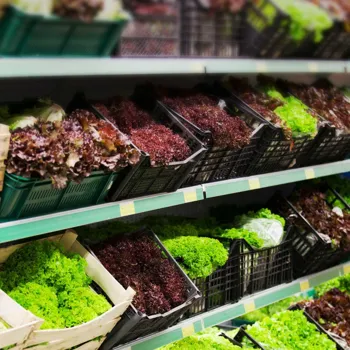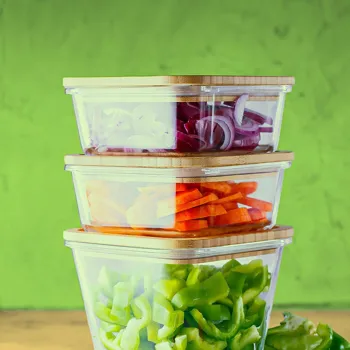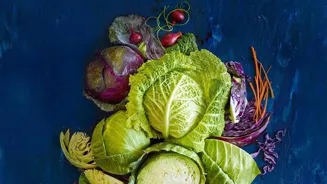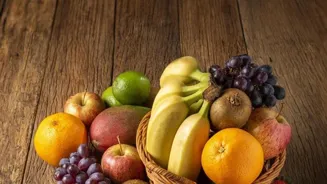Unleash the power of meal prepping for a healthier lifestyle with these 7 essential tips! Dive in to discover more
In today's fast-paced world, finding the time to cook healthy meals every day can feel
like climbing Mount Everest. We're all juggling work, family, and a million other commitments. It's no wonder so many of us end up grabbing whatever's quickest and easiest, even if it's not the healthiest option.
But what if there was a way to eat well without spending hours in the kitchen every night? Enter meal prepping: the art of preparing meals in advance, saving you time, money, and stress throughout the week.
Meal prepping is not just a trend; it's a lifestyle change that can lead to healthier eating habits and a more balanced life. By dedicating a few hours on the weekend or one evening each week, you can create a variety of nutritious meals that are ready to go when you need them.
No more last-minute takeaways or unhealthy snacks! Instead, you'll have delicious and wholesome options waiting for you in the fridge, helping you stay on track with your health goals. It's like having your own personal chef, but without the hefty price tag.
So, how do you get started with meal prepping? It might seem daunting at first, but with a little planning and these seven simple tips, you'll be a meal prep pro in no time. Get ready to take control of your diet and enjoy the convenience of healthy, home-cooked meals all week long!
Start with a Plan: The Power of the Menu
Before you even think about reaching for your chopping board, the first step in successful meal prepping is creating a menu. Spend some time planning out what you want to eat for the week. Consider your dietary needs, favorite flavors, and any specific health goals you may have.
This will not only save you time at the grocery store but also prevent you from making impulse decisions that could derail your healthy eating plans. Write down your breakfast, lunch, and dinner ideas for each day of the week.
Factor in your schedule and identify which meals you typically struggle to prepare on busy weekdays. Maybe you always skip breakfast or are tempted to order food during lunchtime. Focus on prepping those meals first to ensure you have healthy options readily available.
Don't forget to include snacks if you tend to get hungry between meals – think fruits, yogurt, or a handful of nuts. Once you have a solid menu in place, you'll have a clear roadmap to guide your meal prepping session. Remember, it's okay to start small.
Begin with prepping just a few meals or snacks per week. As you get more comfortable, you can gradually increase the number of meals you prepare in advance. This takes the pressure off and helps you avoid feeling overwhelmed.
Grocery Shopping: The Smart Way
With your menu in hand, it's time to hit the local market and gather all the supplies you need. This is where proper planning really pays off. Make a detailed grocery list based on your menu and stick to it as much as possible.

This will help you avoid impulse purchases and ensure you have everything you need for your meal prep session. Before heading to the store, take a quick inventory of your pantry and refrigerator to see what you already have. This prevents you from buying duplicates and saves you money.
A shopping list organized by sections such as produce, grains and dairy can make this process smoother.
When shopping, be mindful of choosing fresh, seasonal produce whenever possible; it’s often cheaper and bursting with flavour.
Also, if on a budget, consider buying grains, pulses, and legumes in bulk to save money, as they are relatively inexpensive and can be used in many different dishes.
Always check the expiration dates of items before you add them to your cart to ensure you have enough time to use them before they spoil; this helps minimise food waste.
It is better to opt for whole and unprocessed food: they are the foundation of any healthy meal plan, ensuring you're getting the most nutrition with every meal.
Prep Your Ingredients: Chop, Chop, Chop!
Okay, groceries are home, now the work starts. Before you start cooking, take some time to prep all your ingredients. This means chopping vegetables, measuring out spices, and portioning out ingredients. This will significantly speed up the cooking process later on.
Wash and chop all your vegetables and store them in airtight containers in the refrigerator. You can also pre-portion sauces or dressings into small containers or ziplock bags. If you're using any nuts or seeds, toast them in advance for extra flavor and crunch.
One time-saving technique is to use pre-cut vegetables or salad kits if you're short on time. While they may be slightly more expensive, they can be a lifesaver on busy weeks.
Another useful tip is to invest in a good quality food processor, allowing you to chop, slice, and shred vegetables quickly and efficiently. As you are preparing components, think about how to use them in different meals and reduce ingredient repeating.
This is key for not being bored of your meals until the end of the week. Organising your food prep stations efficiently and having all utensils ready at the start makes cooking and cleaning a breeze.
Cook in Batches: Maximize Your Time
The key to efficient meal prepping is cooking in large batches. Instead of making one serving of dal, make a big pot that will last you for several meals. This will save you time and energy in the long run. Similarly, roast a tray of veggies that you can use in salads, wraps, or as a side dish.
Consider using techniques like slow cooking or pressure cooking to speed up the process. You can dump all your ingredients into a slow cooker in the morning and come home to a delicious and ready-to-eat meal.
Don't be afraid to multitask.
While one dish is simmering on the stove, you can be chopping vegetables for another. Use your oven strategically to roast multiple items at once. You can also recruit family members or friends to help with the cooking process. The more hands on deck, the faster the job will get done!
Most importantly, have fun and experiment with different flavours and recipes. The more you enjoy the process, the more likely you are to make meal prepping a sustainable habit.
Portion Control: Right Amount Counts
Once everything is cooked, it's time to portion out your meals into individual containers. This is crucial for portion control and helps you avoid overeating. Use measuring cups and spoons to ensure you are serving yourself the right amounts.
Invest in good quality containers that are airtight and leak-proof. Glass containers are a great option as they are non-toxic, easy to clean, and microwave-safe. However, they can be bulky and heavy. Plastic containers are lighter and more portable, but make sure to choose BPA-free options.
When portioning out your meals, consider your individual calorie and nutrient needs. If you are trying to lose weight, focus on smaller portions and plenty of vegetables. If you are trying to gain muscle, include more protein and complex carbohydrates.
Label each container with the name of the meal and the date it was prepared. This will help you keep track of what you have and when it needs to be eaten. Store your meal prep containers in the refrigerator for up to four days. For longer storage, you can freeze some of your meals.
Storage Solutions: Keep it Fresh
Proper storage is essential to keeping your prepped food fresh and safe to eat. Invest in quality containers that will preserve your food's flavor and texture. Airtight containers are a must to prevent your food from drying out or absorbing odors from the refrigerator.

Consider using glass containers as they are non-porous and won’t absorb flavors or stains; plus, they are better for the environment. Divide your meals into individual portions to save time when you are ready to eat and prevent food waste.
When selecting storage containers, it’s crucial to choose materials that are safe for food storage, avoiding those with BPA or harmful chemicals. Make sure vegetables should breathe, wrap them loosely in paper towels or store them in specialized produce bags that promote airflow.
For sauces and liquids, Mason jars or airtight bottles work well, ensuring no leaks and easy pouring. Remember to label each container with the date and contents to keep track of what needs to be consumed first or frozen.
Lastly, consider the space in your refrigerator for effective organisation and keep it uncluttered so you will easily see different items.
Variety is Key: Avoid Meal Prep Fatigue
Eating the same meals day after day can quickly lead to meal prep fatigue. To avoid this, incorporate variety into your meal plans. Try new recipes, experiment with different flavors, and rotate your meals regularly.
Don't be afraid to get creative in the kitchen and try new combinations of ingredients. Use herbs and spices to add flavor and zest to your meals. A simple tweak, such as changing the grain in your bowl or using a different dressing on your salad, can really mix it up.
Also, while it is beneficial to prepare ahead of time, do not prep too far into the future. Three to four days is best for maintaining freshness and taste. If you find yourself getting bored with your meals, consider meal prepping with a friend or family member.
You can each prepare different meals and then swap, giving you a greater variety of options. Remember, meal prepping should be enjoyable! If you find it becoming a chore, take a break and try again next week.
With a little planning and these simple tips, you can make meal prepping a sustainable and enjoyable part of your healthy lifestyle!











